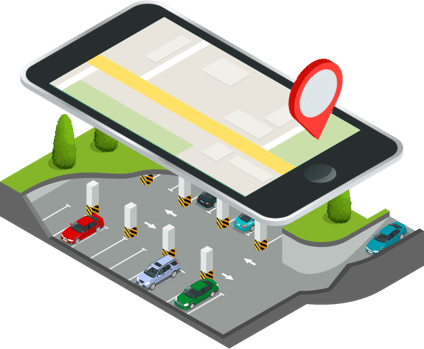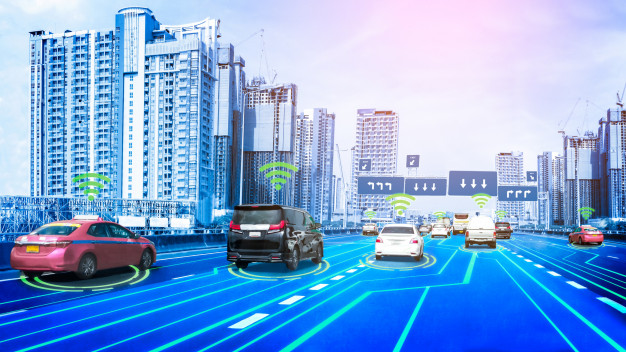
winAMR Smart City Ecosystem provides Industrial IoT Solutions for areas such as Transport, Pollution, Healthcare. Water, Waste, Traffic, Energy and Asset Management. These are the critical areas of improvements to make a city smart and provide healthy life to its residents.

Finding a free parking space in a large city is often difficult. winAMR Smart parking solutions can be used to optimize the use of parking spaces. Each parking space is equipped with a sensor that detects whether a car is parked on it or not. The data is used to provide drivers with real time information on the nearest free parking spaces and their price (alternatives).
Smart Parking eliminates the need for driving around looking for a free parking space, which reduces traffic. Furthermore, if there is no free parking space at all, drivers can decide to change their plans and look for other option.
Computers have been used for years to monitor road conditions, but advances in sensors and the internet of things are now offering a major leap in monitoring technology. Real-time information optimizes traffic flows. Traffic data collected through sensors coupled with commuter GPS and Bluetooth allow for instantaneous reporting of traffic conditions. Fine grained traffic flow data created by sensors in infrastructure and vehicles allow intelligent systems to optimize traffic flow by adjusting traffic lights and other signals. These traffic control systems can also be used to guide emergency services like ambulances smoothly through traffic by finding the fastest route, keeping bridges closed and adjusting traffic lights.

Just in time waste collection Most cities use some type of waste container to collect the waste produced by households. Traditionally, these garbage trucks operated on fixed routes, e.g. visiting each container once a week. As a consequence, some containers are emptied when they are only half full and some are emptied days after they became full. The ‘smart solution’ is to equip the waste containers with sensors that detect the volume of the waste in the container.
This data is used to optimize the number of garbage trucks and their routes, skipping containers that are not yet full and making an early stop at containers that are close to reaching their limit. This results in a cheaper process (fewer stops required) and elimination of full waste containers (which could lead to people dumping their waste on the street next to the container).
 & Made in India
& Made in India